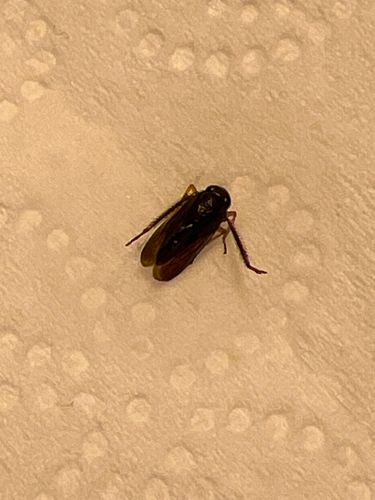Leafhopper (likely)
Scientific Name: Varies by species (e.g., Macrosteles quadrilineatus for Aster Leafhopper, Empoasca fabae for Potato Leafhopper)
Order & Family: Order: Hemiptera, Family: Cicadellidae
Size: Typically 2 to 15 mm in length, with most common species ranging from 3 to 6 mm.

Natural Habitat
Leafhoppers are highly adaptable and found in diverse habitats, including grasslands, forests, agricultural fields, gardens, and urban landscapes, wherever suitable host plants are available.
Diet & Feeding
Leafhoppers are phytophagous, meaning they feed on plant sap. They use their piercing-sucking mouthparts to extract sap from the phloem and xylem of various plants, including trees, shrubs, and herbaceous plants.
Behavior Patterns
Leafhoppers are very active insects. They are known for their jumping ability, which is a primary escape mechanism when disturbed. They communicate through vibrations. Many species are migratory, moving between different host plants throughout the year.
Risks & Benefits
Risks: Many leafhopper species are significant agricultural pests due to direct feeding damage and, more importantly, their ability to transmit plant pathogens (viruses, bacteria, phytoplasmas). This can lead to diseases like aster yellows, curly top, and phony peach disease, causing economic losses in crops. Benefits: In certain ecosystems, they can be a food source for predatory insects, spiders, and birds. Some species play a minor role in nutrient cycling.
Identified on: 8/21/2025